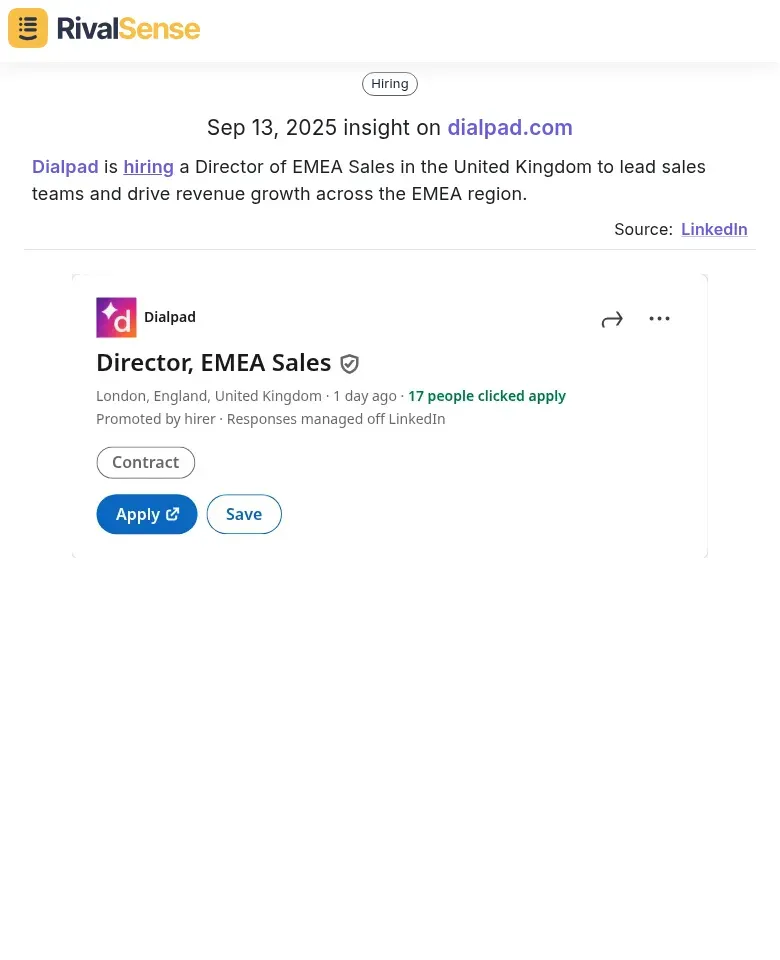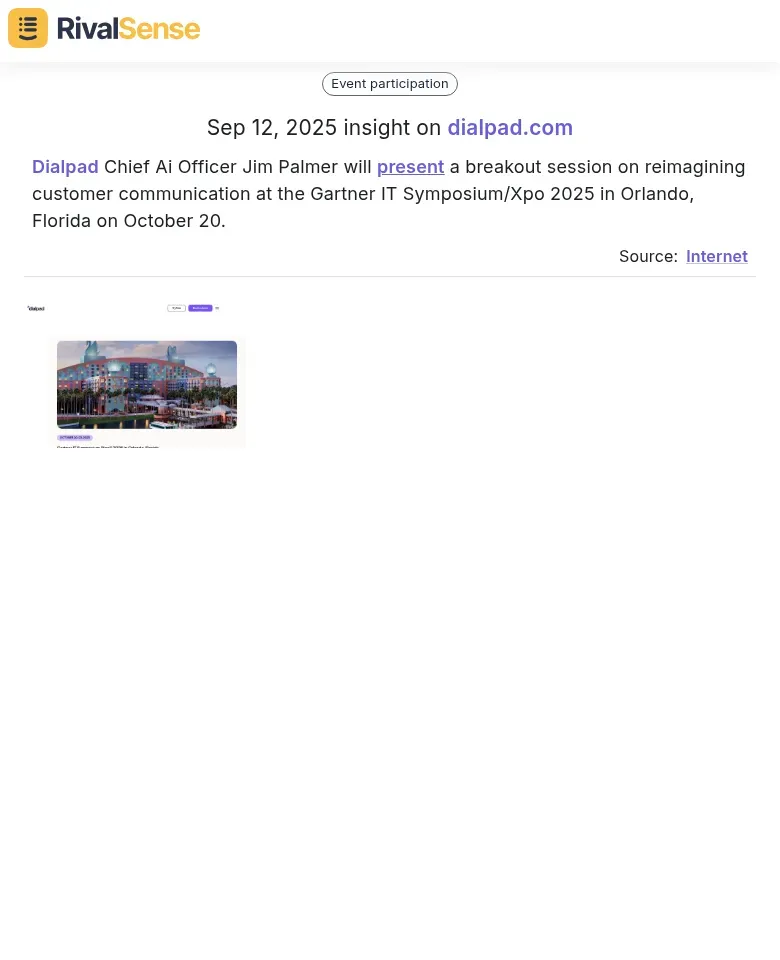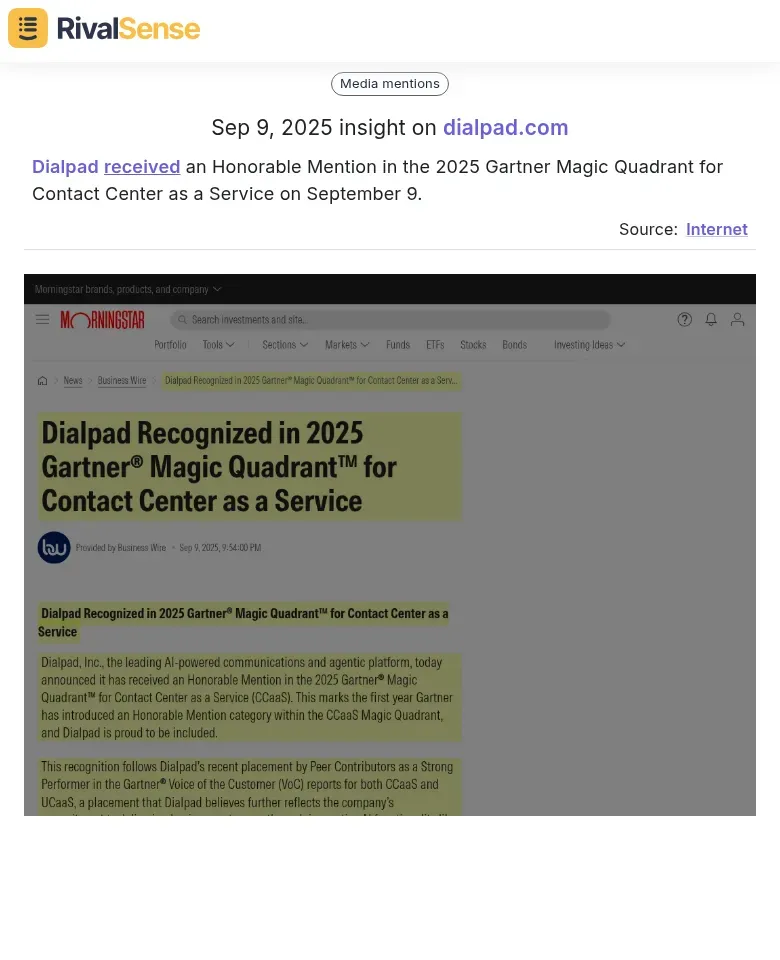Data-Driven Key Account Intelligence for Competitive Edge
Traditional key account management often relies on intuition and periodic check-ins, leaving gaps in strategic oversight. Data-driven key account intelligence transforms this by converting raw data—such as purchase history, engagement metrics, and market signals—into actionable insights. For example, tracking a key account's product usage spikes can reveal expansion opportunities before competitors notice. This shift enables real-time monitoring of account health, churn risks, and upsell potential, giving you a competitive edge through proactive, not reactive, strategies. Unlike gut-feel decisions, data-driven approaches reduce biases and improve accuracy, as seen in companies that use predictive analytics to prioritize at-risk accounts. To start, integrate CRM data with external sources like news alerts or social sentiment, set up automated dashboards for key metrics, and conduct regular reviews to adjust tactics. 💡 Tip: Focus on 3-5 critical data points per account, such as contract renewal dates or support ticket trends, to avoid overload and drive focused actions.
Strategic Hiring Insights: Decoding Competitor Growth Patterns
Executive hiring patterns reveal competitor expansion strategies before they're public. Track C-suite appointments in new regions to predict market entry, and analyze role-specific trends to understand capability building. For instance, RivalSense recently tracked that Dialpad is hiring a Director of EMEA Sales in the United Kingdom to lead sales teams and drive revenue growth across the EMEA region. This type of insight is valuable because it signals geographic expansion and helps you anticipate market entry, allowing you to prepare counter-strategies or identify partnership opportunities early.

Practical steps:
- Monitor executive job postings in target markets weekly 📅
- Track hiring velocity by region to identify expansion priorities
- Analyze role types (technical vs. commercial) to decode strategic direction
- Use hiring timelines to anticipate product launches by 3-6 months
- Benchmark competitor team growth against industry averages
Regional hiring data provides early signals of geographic strategy. A competitor hiring 10+ sales reps in Austin likely targets Texas tech, while European HQ establishment suggests EU expansion. Role-specific trends are equally telling—data scientist hires precede AI features, while compliance officers signal regulated market entry.
✅ Checklist for actionable insights:
- Map executive moves to strategic initiatives
- Correlate hiring spikes with product roadmaps
- Compare regional hiring ratios to market potential
- Track capability gaps being filled through recruitment
- Set alerts for key role categories in expansion markets
This intelligence helps you anticipate moves, allocate resources proactively, and counter competitive threats before they materialize.
Thought Leadership Intelligence: Tracking Market Influence
Thought leadership activities reveal strategic direction before product launches. Track competitor speaking engagements at major industry conferences to identify emerging trends they're betting on. For example, if a rival consistently presents on AI integration, expect AI features in their roadmap. A recent RivalSense insight shows that Dialpad Chief AI Officer Jim Palmer will present a breakout session on reimagining customer communication at the Gartner IT Symposium/Xpo 2025 in Orlando, Florida on October 20. This insight is crucial as it highlights the competitor's focus areas and upcoming innovations, enabling you to align your own R&D and marketing efforts accordingly.

Practical steps:
- Create a spreadsheet tracking competitors' speaking slots, topics, and audience size 📊
- Analyze presentation themes quarterly to spot pattern shifts
- Use tools like RivalSense to automate tracking of public appearances
- Compare their conference choices against your own to identify market gaps
This intelligence helps anticipate competitor moves 6-12 months in advance, allowing strategic countermeasures.
Market Recognition Intelligence: Understanding Competitive Positioning
Market recognition intelligence transforms industry awards, analyst mentions, and media coverage into actionable competitive insights. Track competitors' award wins and nominations to gauge market validation—these signal product excellence and customer satisfaction. For instance, RivalSense captured that Dialpad received an Honorable Mention in the 2025 Gartner Magic Quadrant for Contact Center as a Service on September 9. This type of insight is valuable because it benchmarks competitor positioning in analyst reports, helping you understand their strengths and weaknesses relative to industry standards, and informing your own strategic adjustments.

Analyst recognition (e.g., Gartner Magic Quadrant placements) benchmarks your performance against industry standards, revealing strengths and gaps. Use this data to refine your market strategy: if rivals dominate in innovation awards, prioritize R&D; if they lead in sustainability accolades, enhance your ESG initiatives.
Practical steps:
- Monitor awards in trade publications and industry events 🏆
- Analyze analyst reports for positioning trends
- Map mentions to identify market perception shifts
For example, a SaaS company noticing a competitor's 'Best UX' award might invest in user experience testing. This intelligence helps you align strategies with market expectations, turning competitive positioning into a roadmap for differentiation and growth.
Building Your Data-Driven Intelligence Framework
Building a data-driven intelligence framework starts with systematic data collection. It involves integrating various data sources to create a comprehensive view of the competitive landscape. This framework ensures that your decisions are based on real-time, accurate information. Establish automated monitoring processes using tools like RivalSense to track competitors' pricing changes, feature updates, marketing campaigns, and customer reviews in real-time. Set up alerts for key triggers like new product launches or pricing shifts. Create a centralized dashboard that aggregates data from multiple sources—social media, review sites, news outlets, and industry reports—to ensure comprehensive coverage.
Next, integrate these diverse intelligence streams to form a holistic view. Combine quantitative data (e.g., market share, revenue trends) with qualitative insights (e.g., customer sentiment, competitor messaging) to identify patterns and gaps. For example, if a rival's negative reviews spike, correlate this with their recent feature changes to uncover weaknesses.
Finally, focus on actionable insights. Use frameworks like SWOT analysis to translate data into strategic decisions. Prioritize insights that directly impact your goals, such as adjusting your pricing strategy to counter a competitor's discount campaign.
✅ Checklist for implementation:
- Automate data collection
- Diversify sources
- Analyze trends weekly
- Align insights with business objectives
This approach ensures your intelligence drives real competitive advantage.
Conclusion: Sustaining Competitive Advantage Through Intelligence
Sustaining competitive advantage requires embedding intelligence into your operational DNA. By making competitor intelligence a core part of your business processes, you can stay ahead of market shifts. Implement ongoing monitoring processes by setting up automated competitor tracking systems that alert you to market shifts, pricing changes, and new product launches. Create a monthly competitive intelligence review cadence where cross-functional teams analyze findings and identify strategic opportunities.
Translate insights into proactive strategies by establishing clear action frameworks. When competitors launch new features, conduct gap analysis to determine if you should match, differentiate, or ignore. Use pricing intelligence to optimize your positioning—if competitors drop prices, assess whether to follow or emphasize your premium value proposition.
Measure ROI through specific KPIs: track win rates against key competitors, monitor market share changes, and calculate the revenue impact of intelligence-driven decisions.
✅ Practical checklist:
- Automate data collection
- Assign intelligence ownership
- Establish regular review cycles
- Link insights to strategic actions
- Track performance metrics
Companies that institutionalize these processes consistently outperform reactive competitors by anticipating market movements rather than responding to them.
🚀 Ready to harness the power of data-driven intelligence for your business? Try RivalSense for free at https://rivalsense.co/ and get your first competitor report today!
📚 Read more
👉 Advanced Regulatory Competitor Insights for Market Share Analysis
👉 How PayPal's PYUSD Expansion on Stellar Reveals Key Competitor Moves
👉 How to Analyze Your Competitors' Ads on Google, Facebook & Instagram
👉 Build Key Account Performance Dashboards for Fintech B2B
👉 How Xometry's Mobile App Launch Prompted Competitor Innovation
